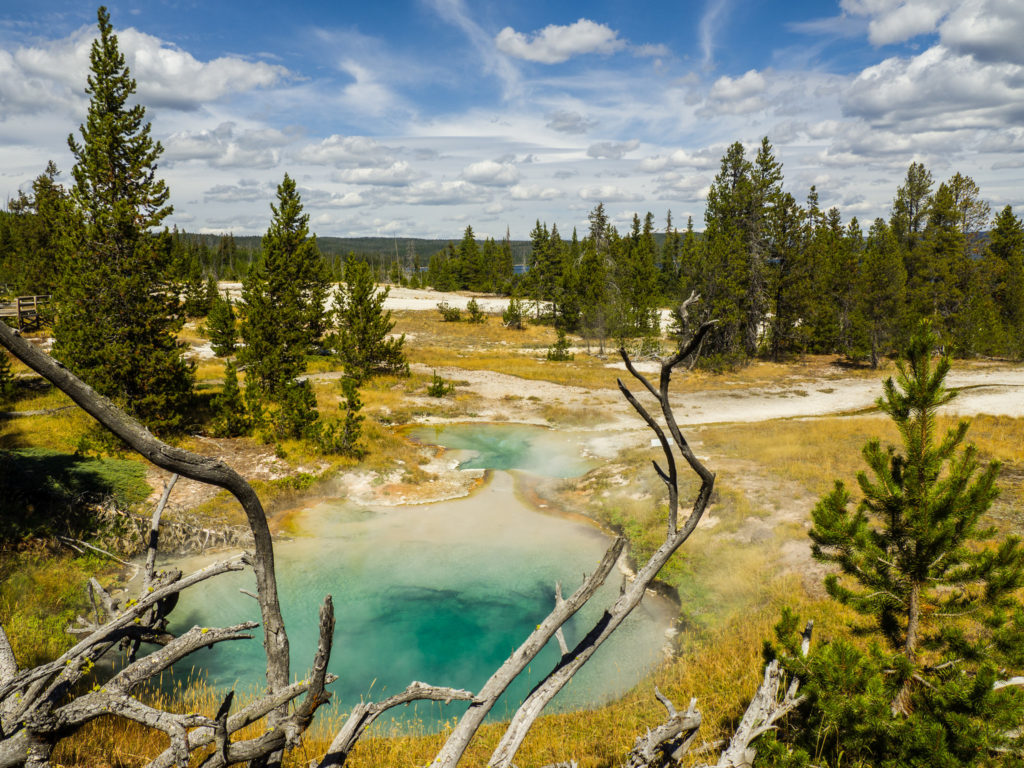
Yellowstone National Park was the first national park in the US and according to some sources, the first in the world. It is the home of charismatic megafauna and stunning geysers that attract over four million visitors a year. It is the only place in the United States where bison and wolves can be seen in great numbers. And it is changing.
Over the next few decades of climate change, Yellowstone will quite likely see increased fire, less forest, expanding grasslands, shallower, warmer waterways, and more invasive plants. All these things will alter how and how many animals move through the landscape. Ecosystems are always changing, but climate change is transforming habitats so quickly that many plants and animals may not be able to make the transition at all.
Since 1948, the average annual temperature in the Greater Yellowstone ecosystem has gone up by 2 degrees Fahrenheit. On balance, winter is 10 days shorter and less cold. The Northern Rockies snowpack has fallen to its lowest level in eight centuries. Summers in the park are warmer, drier, and increasingly prone to fire.
Non-nutritious invasive plants like cheatgrass and desert madwort have replaced nutritious native plants. When plants like these take over, they suck moisture out of the ground early so that bison and elk cannot be sustained throughout the summer.
The behavior of elk and other animals is already changing, with many staying outside the park to nibble lawns and alfalfa fields. In turn, wolves go where the elk go. Forests and waterways are changing as well.
The rapid changes going on at Yellowstone mean that the park that our children and grandchildren will visit in the future is likely to be a very different one from the Yellowstone we remember.
**********
Web Links
In Yellowstone National Park, warming has brought rapid changes.
Photo, posted September 7, 2016, courtesy of Mike Yang via Flickr.
Earth Wise is a production of WAMC Northeast Public Radio.
Leave a Reply